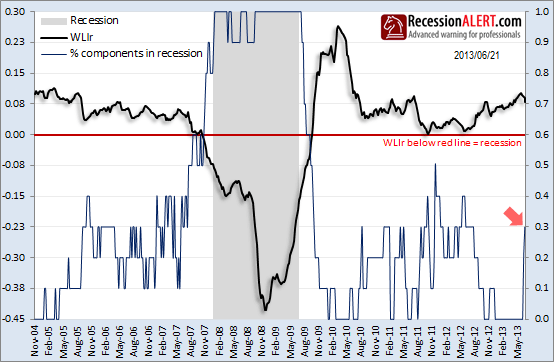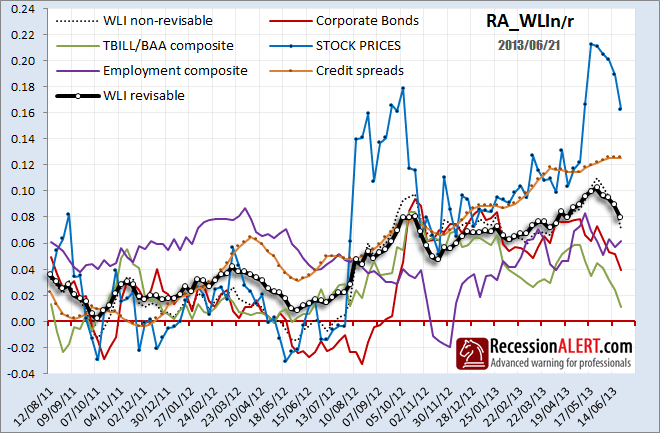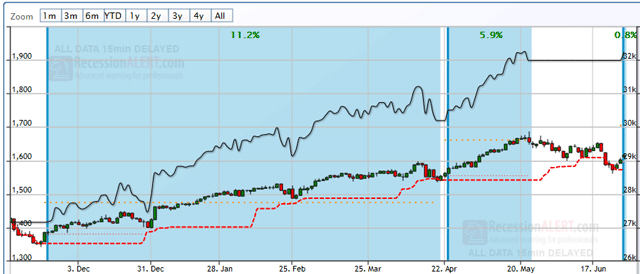Whilst the market has sold off in the expectation of FED tapering in the face of an improving economy, and co-incident economic data continues to show improvement, the leading data is likely to do otherwise in the coming months. This means that after an initial improvement of short duration the pressure will again be back on the co-incident data, and hence the FED. Whilst the stock market could have many reasons to be selling off in the near future, fears of FED tapering should not be amongst them.
A few weeks back we started warning our clients of a roll-over of the leading weekly data based on the correlation of weekly MBS and our Weekly Leading Index WLIr. There is a better than two-thirds long-term correlation between WLIr and MBS pushed forward 52 weeks and as the chart below shows, we have multi-month downward gravitational forces on the weekly leading data until April 2014. One could even make the assumption that recession risk is likely to peak again around this date.

The WLIr is a weekly leading index composed entirely of more than 50 weekly leading time series grouped into 5 composites representing the stock market, credit spreads, corporate bonds, employment and T-bill spreads. It is published weekly on Thursdays and today’s update appears below:
EXTERNAL PUBLISHERS NOTE : The below content is copyrighted, please link here for your readers to complete the article.
We see that the WLIr did indeed peak 3 weeks ago and the percentage of 50 components flagging recession (called a diffusion) has jumped from zero to 30% since. Such a large jump in the diffusion on the back of such a small drop in the WLIr composite hints at severe downward pressure to come. The 50 year history of the diffusion shows it never spikes, it always rises in multi-month “clumps” ranging from 4 to 9 months. The 5 main groups of leading data making up the WLIr can be seen rolling over in the below chart. The dotted line is a version of WLIr that consists of components that are never revised (like interest rates and stock indices etc.)
If you are in the “bad economic news is good news” camp then this could be a bullish view on the stock market. More than likely the economy is likely to keep struggling along and the stock market will continue to be propped up by QE. What should be worrying everyone is what happens if we hit high recession risks in late 2013 or early 2014 and QE is still in play. More QE? Interesting times indeed.
In the meantime a volatile market is likely to accompany conflicting economic data and a continued fear of tapering which will provide good buy on the dip opportunities for those in the “bad news is good news” camp. The recent sell-off provided our SP-500 Market Timing project with a buy signal yesterday – hopefully we have seen the last of the current correction but as all seasoned traders know, the only thing to expect is the unexpected! This has certainly been the case with this bull market to date.




Comments are closed.